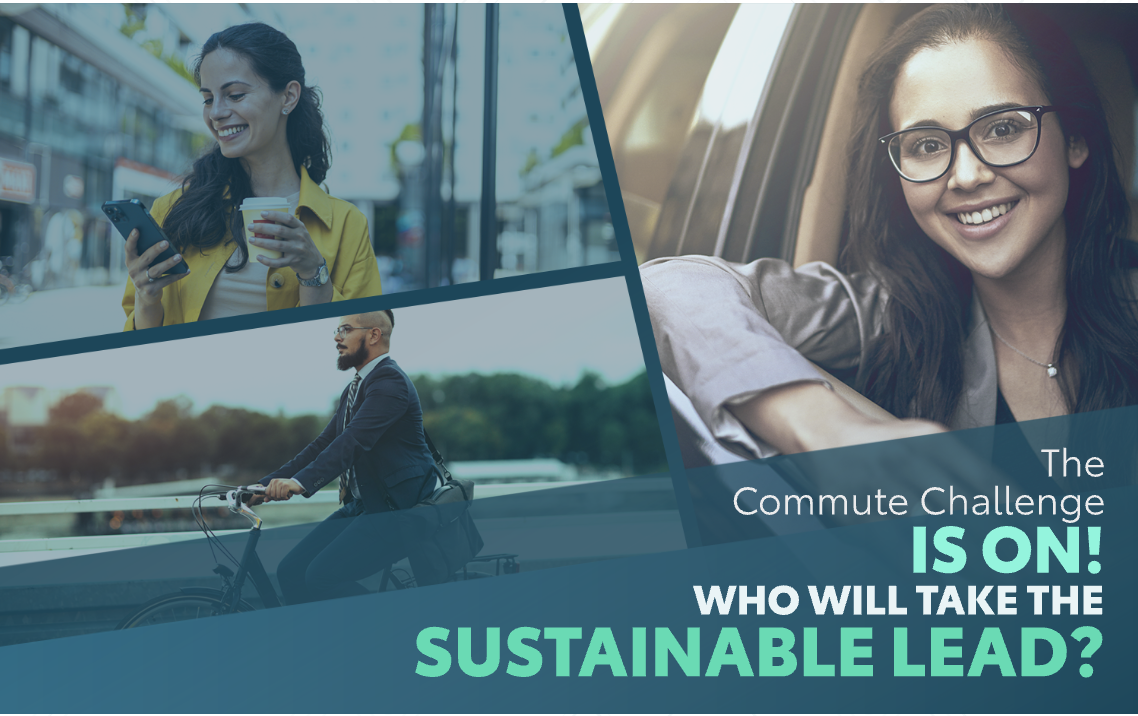The Low-Hanging Fruit of Green Commutes: Carpooling, Walking and Cycling
In the race towards a sustainable future, transportation emissions stand as a significant hurdle.

As individuals and organisations seek to reduce their carbon footprint, the focus often shifts towards electric vehicles (EVs) as a seemingly straightforward solution. However, while EVs undoubtedly play a crucial role in decarbonising transportation, there exists a trove of untapped potential in simpler, more accessible alternatives – carpooling, walking, and cycling.
These modes of commuting, often referred to as “active transportation” or “sustainable mobility,” offer many benefits that extend far beyond reduced emissions. Carpooling, for instance, not only cuts fuel consumption and associated emissions but also alleviates traffic congestion, improves air quality, and fosters a sense of community among colleagues. Also, compared to public transport, you must admit that the convenience is much greater. Walking and cycling, on the other hand, promote physical activity, enhancing both individual and public health while reducing the need for expensive gym memberships or healthcare costs.
Addressing the Challenges of Green Mobility
Despite these clear advantages, carpooling, walking, and cycling often remain underutilised. The reasons are multifaceted, ranging from infrastructural shortcomings to a lack of awareness and cultural acceptance. However, these challenges can be addressed with a combination of strategic planning, targeted incentives, and a concerted effort to shift mindsets.
For carpooling, companies can implement carpool matching programs, provide designated parking spaces, and offer incentives such as gas reimbursement or priority parking. For walking and cycling, investments in safe and well-maintained infrastructure, including bike lanes and pedestrian walkways, are essential. Additionally, companies can encourage active commuting by providing showers and changing facilities, offering discounts on bikes and cycling gear, and organising group cycling or walking events.
In contrast, the transition to EVs, while promising, faces significant challenges. The upfront cost of EVs remains high, limiting their accessibility. Furthermore, developing a robust charging infrastructure is still in its early stages, raising concerns about range anxiety and hindering widespread adoption.
Moreover, the manufacturing of EVs is not without its environmental impact. The extraction and processing of raw materials for batteries pose environmental concerns, and the disposal of spent batteries raises sustainability issues. While advancements in battery technology are expected to mitigate these concerns, they remain a factor to consider.
Commuting Emissions Are a Big Part of Scope 3 Emissions
Commuting emissions are a significant contributor to an organisation’s carbon footprint. These emissions arise from employee travel to and from work, regardless of the mode of transportation used. Traditionally, organisations have focused on reducing direct emissions (Scope 1) and indirect emissions from purchased electricity (Scope 2). However, there is a growing recognition of the importance of addressing indirect emissions from other sources, including commuting (Scope 3).

Starting in 2025, the Greenhouse Gas Protocol (GHG Protocol), the international standard for corporate greenhouse gas accounting, will require companies to report their Scope 3 emissions. This means that organisations will need to measure and track their commuting emissions and develop strategies to reduce them.
By promoting carpooling, walking, and cycling, organisations can significantly reduce their commuting emissions and comply with the upcoming Scope 3 reporting requirements. Additionally, these measures can lead to other benefits, such as improved employee health, reduced traffic congestion, and better air quality.
To understand how much emissions your company can save by implementing green commuting options, you can use KINTO Join’s corporate commute calculator. Along with a personalised report on your CO2 savings, you will also get a set of useful suggestions to get you started on your green path.
Remember, while EVs hold promise for the future of transportation, their widespread adoption faces challenges that necessitate a focus on readily available and accessible alternatives. As organisations prepare to report their Scope 3 emissions, promoting carpooling, walking, and cycling can be a powerful step towards a more sustainable future.
By investing in infrastructure, providing incentives, and fostering a culture of active transportation, companies can play a pivotal role in unlocking the potential of these sustainable commuting options.
This article was originally published by KINTO Join Mobility Business Solutions.









